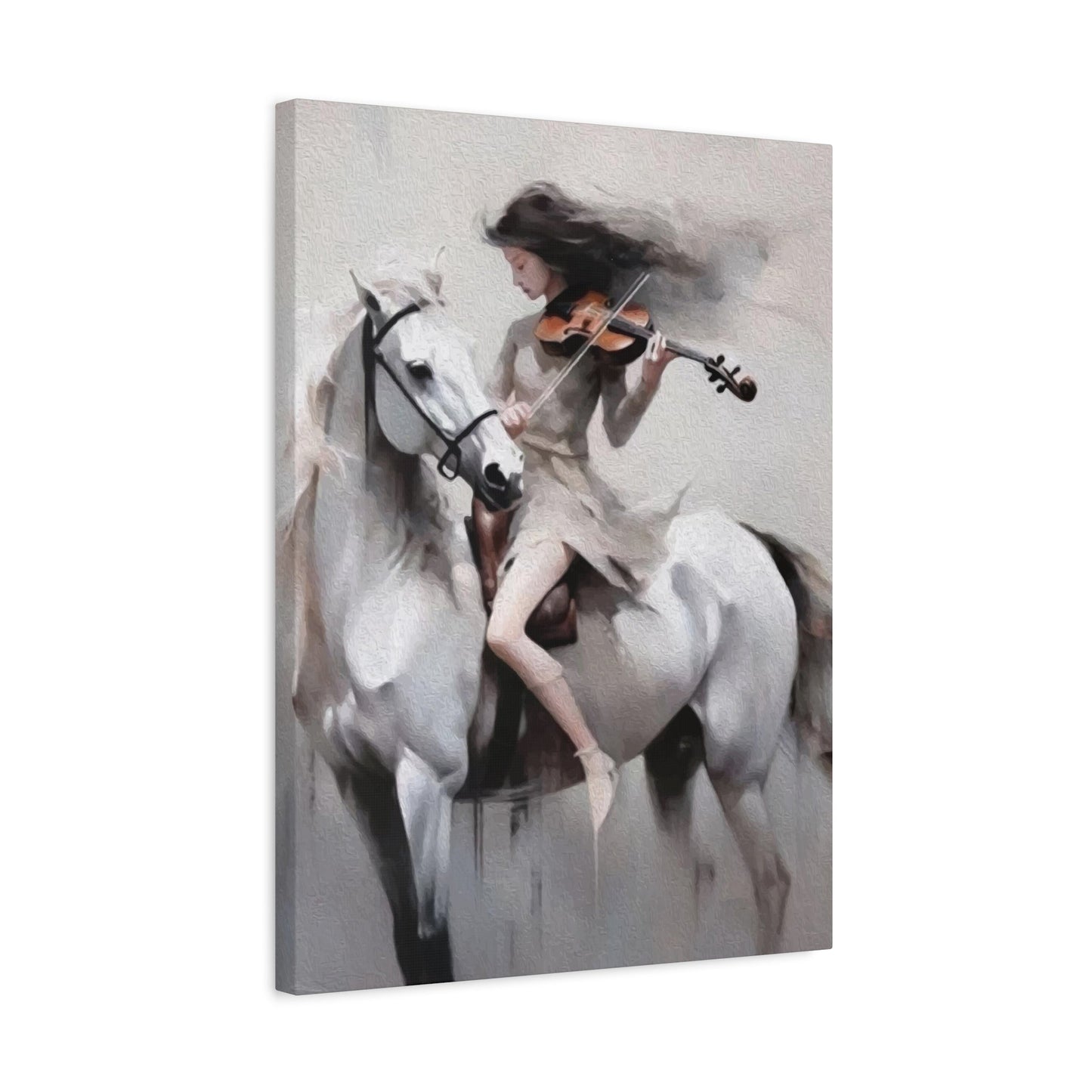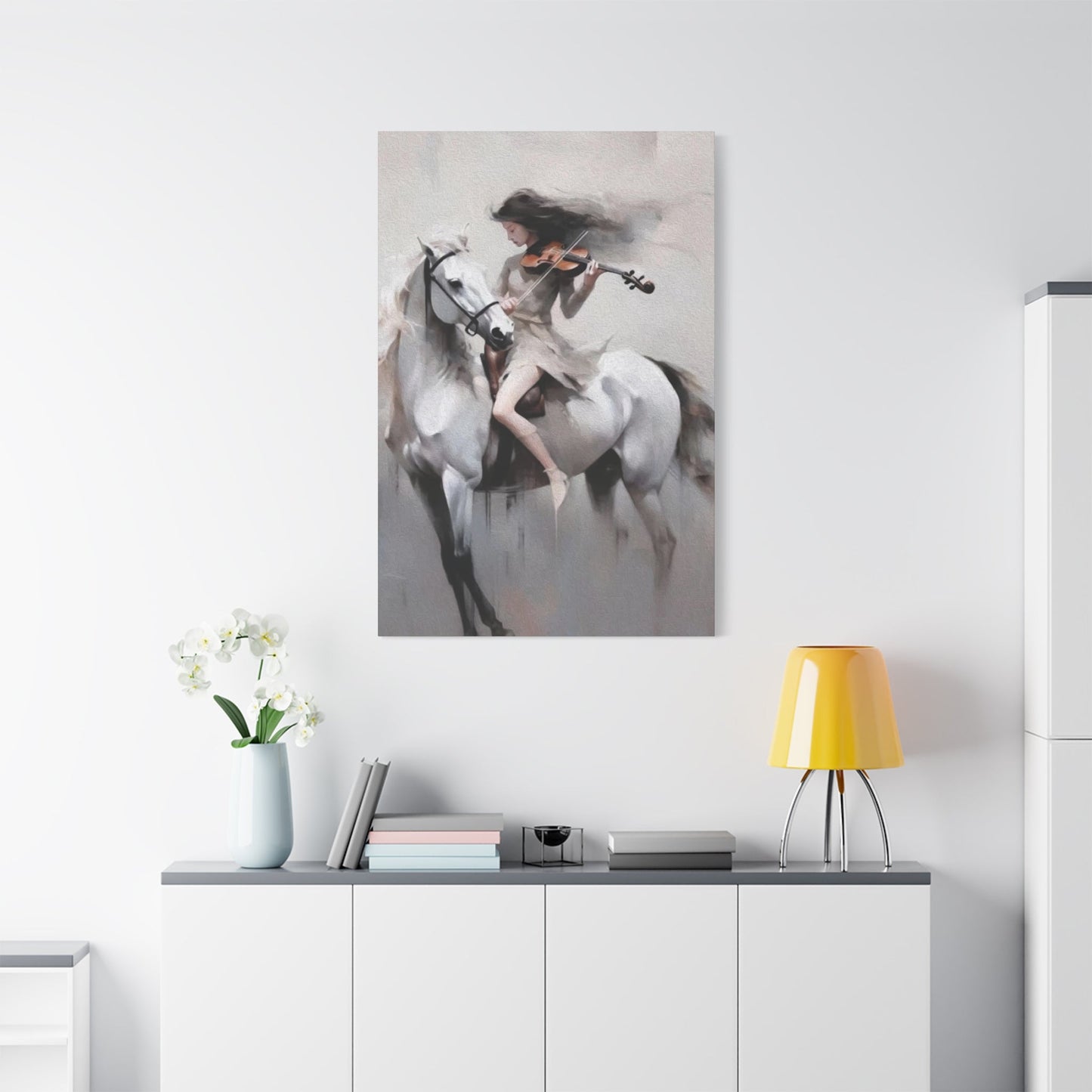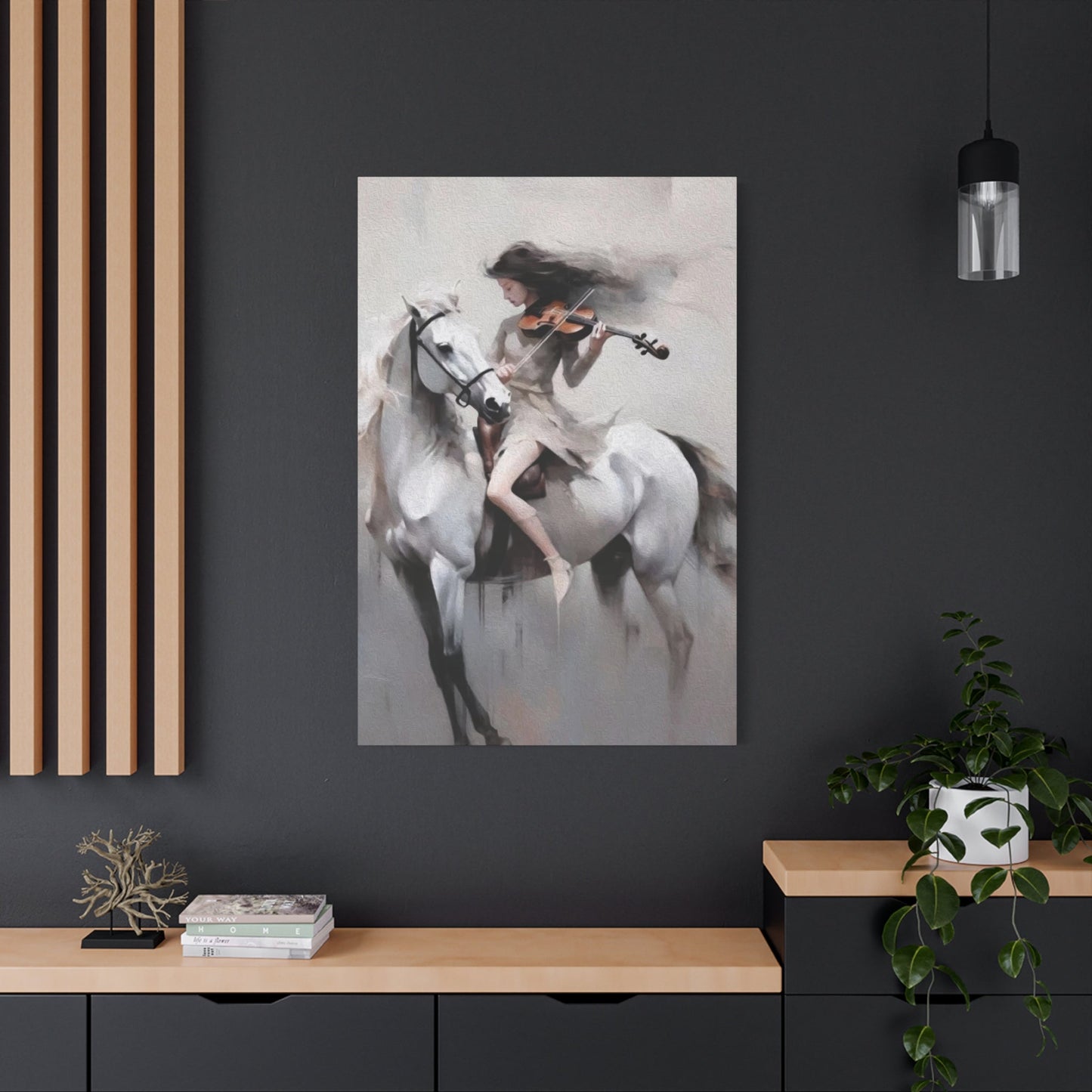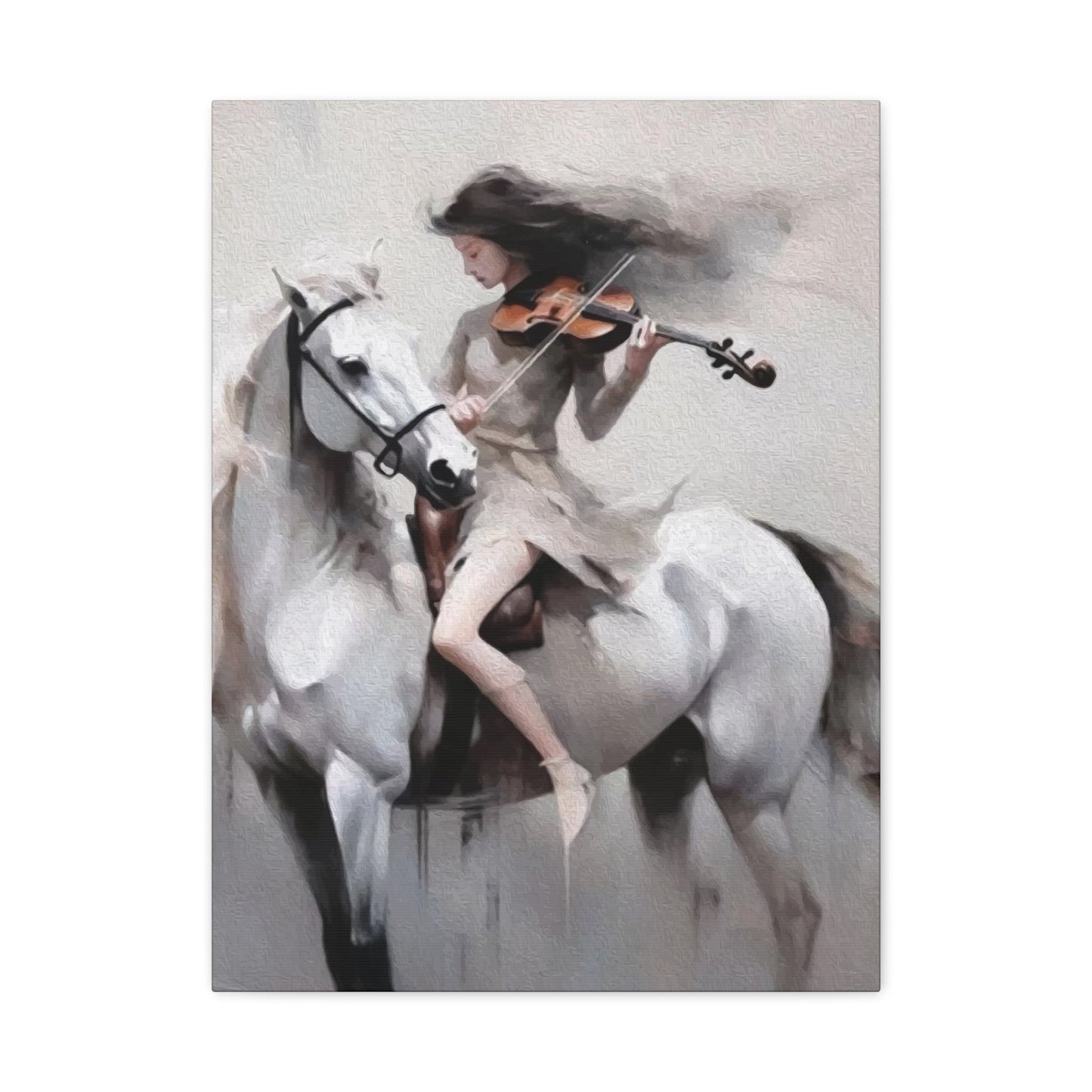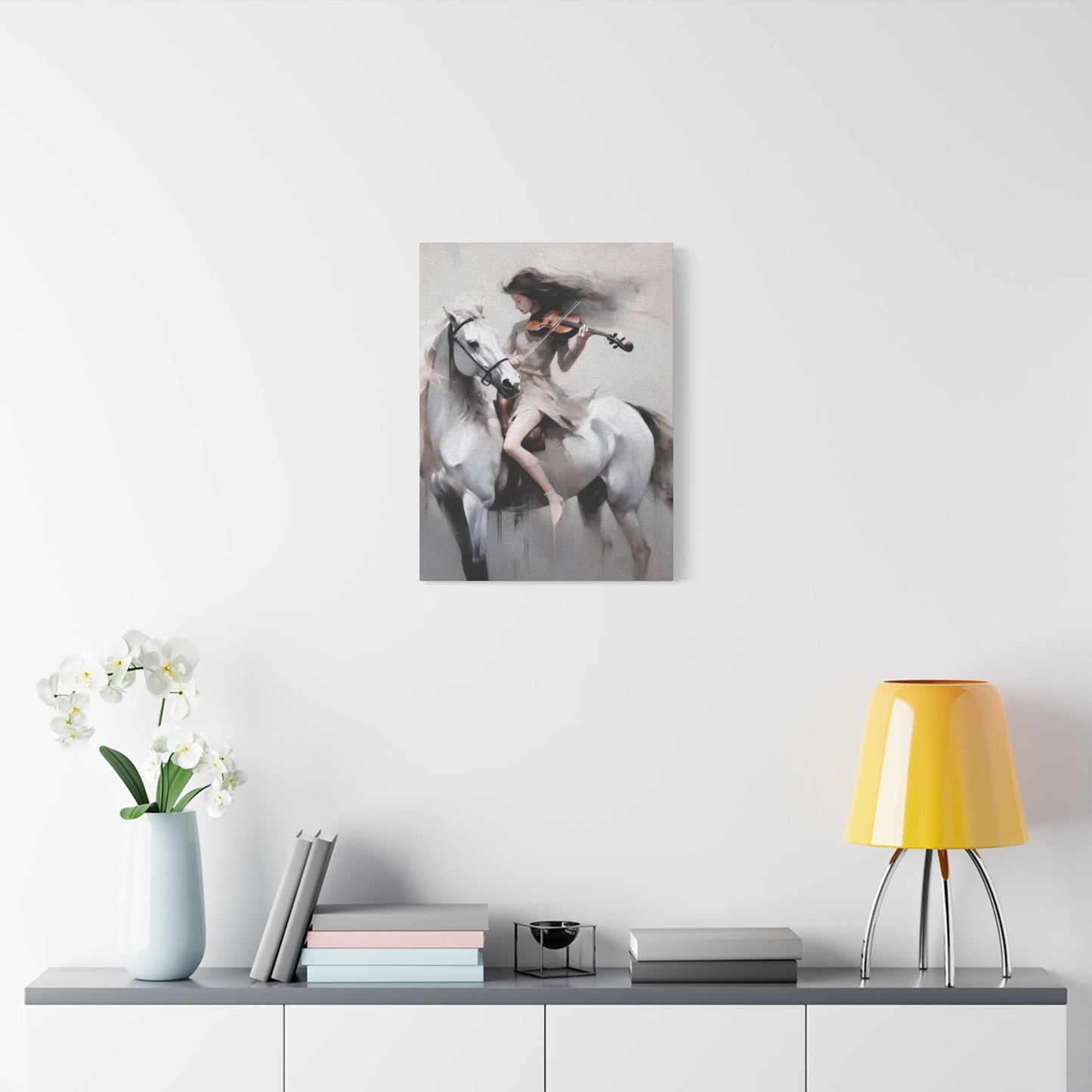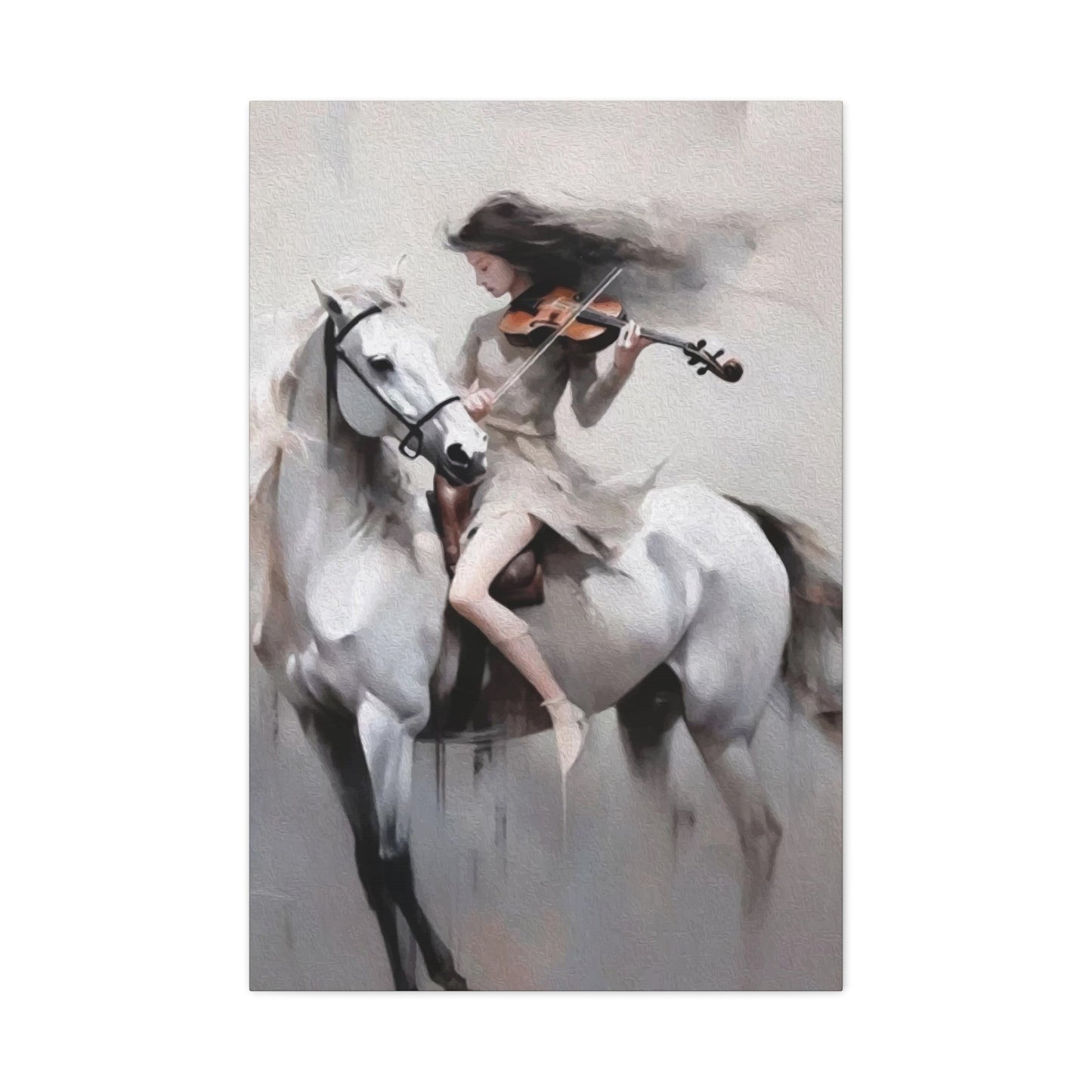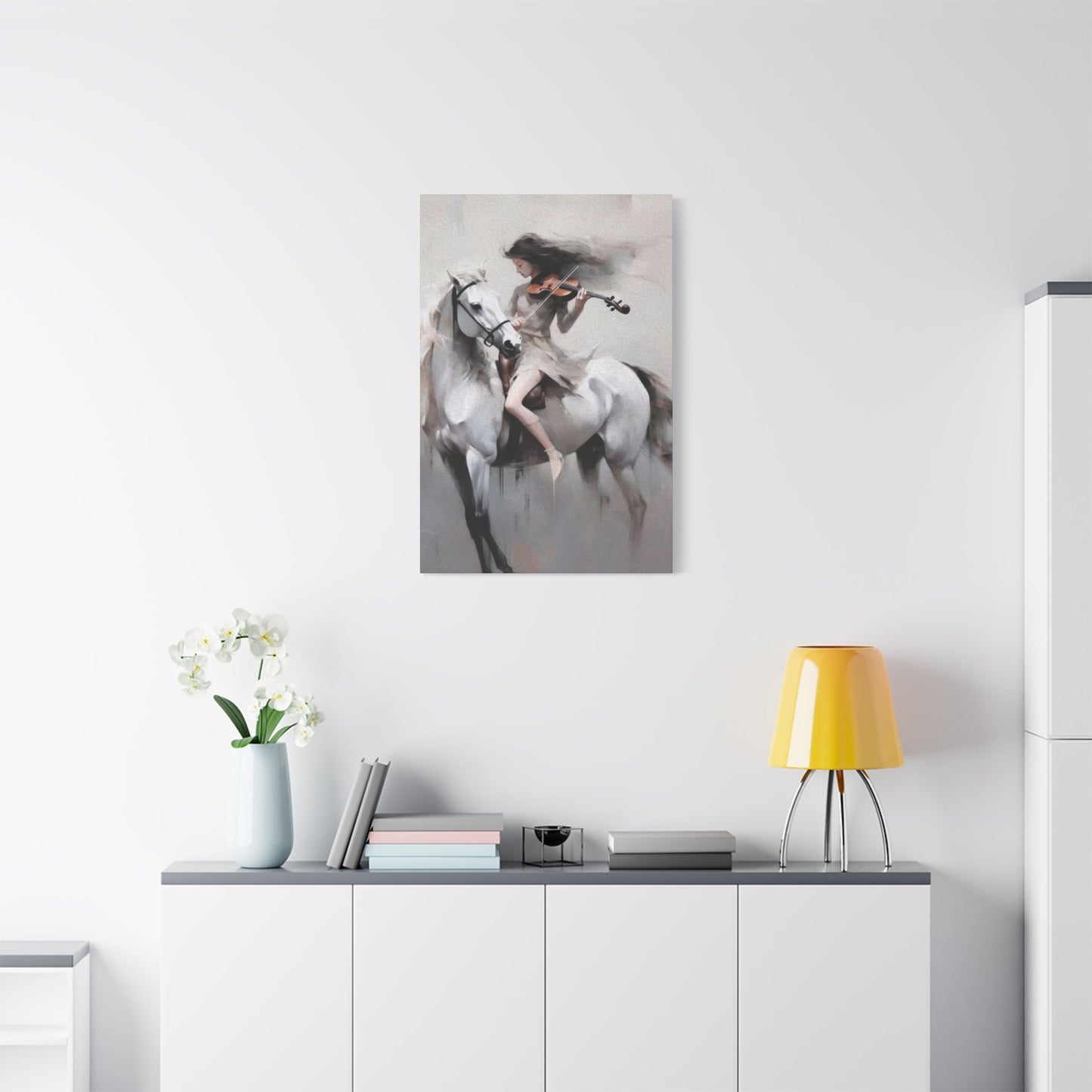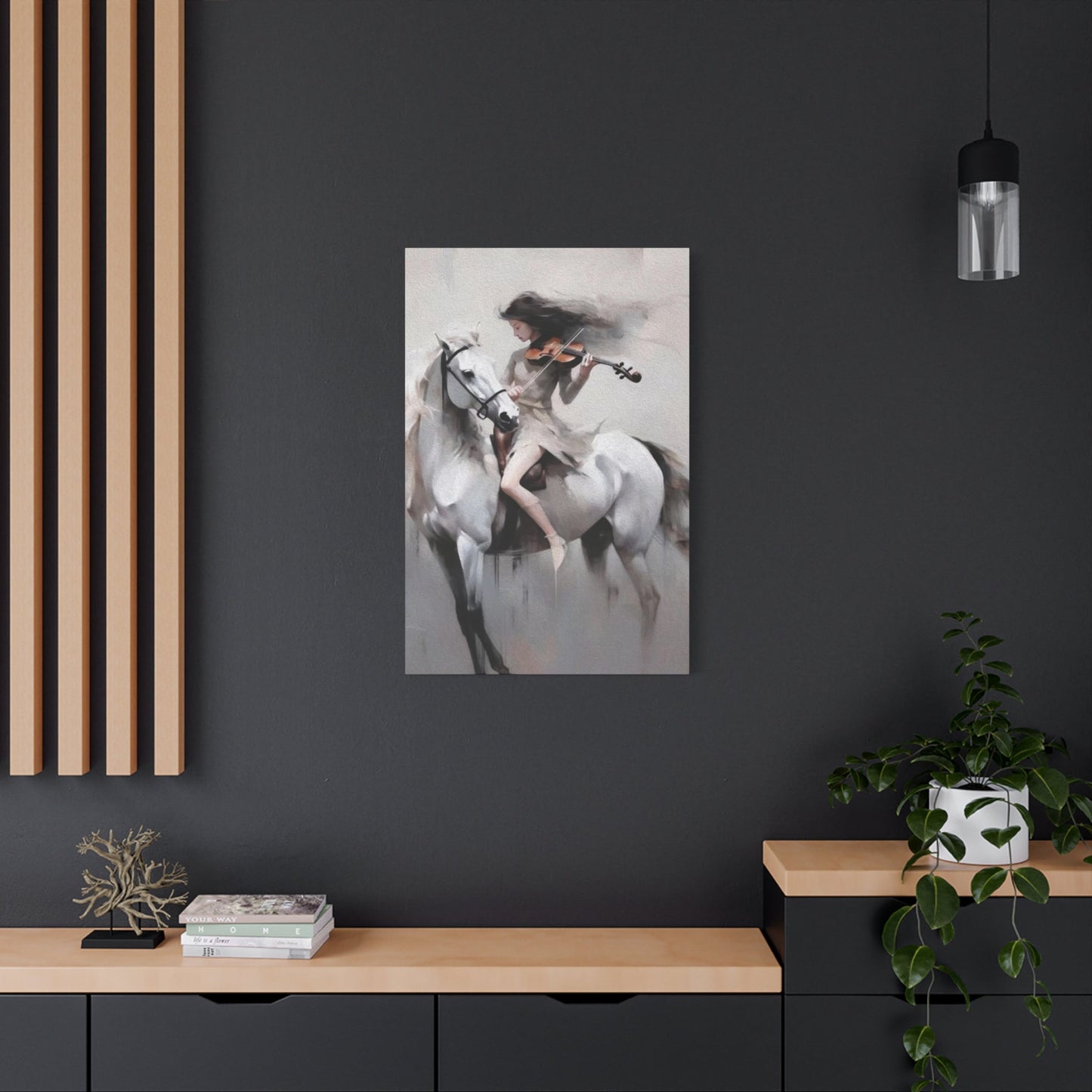The Ultimate Guide to Women Playing Violin Wall Art: Transforming Spaces with Musical Elegance
The captivating imagery of women performing on the violin has become one of the most sought-after themes in contemporary interior decoration. This artistic representation masterfully combines the grace of feminine beauty with the timeless elegance of classical music, resulting in visual masterpieces that resonate deeply with art enthusiasts and music lovers alike. The portrayal of female violinists in decorative artwork captures moments of profound artistic expression—frozen in time, yet eternally dynamic—offering viewers a glimpse into the emotional depth and discipline inherent in musical performance.
These art pieces serve as powerful focal points in any living space, whether displayed in a cozy music room, a sophisticated living area, or a creative studio. Beyond their striking aesthetic appeal, they convey cultural significance by celebrating women’s contributions to the arts and the universal language of music. The image of a woman with her violin symbolizes harmony between strength and delicacy, passion and control, tradition and innovation.The popularity of women playing violin wall art stems from its ability to evoke feelings of sophistication, creativity, and passion, while simultaneously adding a touch of classical refinement to modern interiors. Artists employ a variety of styles—from realistic portraiture and impressionistic renderings to abstract and minimalist interpretations—allowing homeowners to select pieces that best align with their personal taste and décor style.
Furthermore, the use of diverse color palettes and compositions enables this artwork to complement a wide range of interior design schemes. Warm tones can add coziness and intimacy, while monochrome or cool shades bring a contemporary, sleek vibe. Many pieces also incorporate musical notes, flowing hair, or dynamic bow strokes to enhance the sense of movement and energy.Incorporating women playing violin art into your home not only elevates the visual landscape but also inspires creativity and emotional connection. It is a celebration of music’s timeless beauty and the strength of feminine artistry, transforming ordinary walls into galleries of elegance and inspiration.
Understanding the Artistic Appeal of Female Violinist Imagery
The visual representation of women playing violins carries an inherent elegance that transcends mere decoration. This artistic theme captures the intersection of musical passion and visual beauty, creating compositions that speak to our deepest aesthetic sensibilities. When a female figure is depicted with a violin, the artwork tells a story of dedication, skill, and emotional expression. The positioning of hands on strings, the curve of the instrument against the body, and the concentrated expression on the musician's face all contribute to a narrative that viewers find endlessly fascinating.
These artworks often showcase the violinist in various poses, from contemplative practice sessions to passionate performance moments, each capturing a different facet of the musical experience. The interplay between the human form and the instrument creates lines and curves that naturally draw the eye, making such pieces ideal for creating visual interest in any room. Artists who specialize in this genre understand how to balance technical accuracy with artistic interpretation, resulting in pieces that satisfy both music enthusiasts who appreciate authentic representation and art lovers who seek aesthetic beauty.
The Historical Significance of Women in Classical Music Art
Throughout art history, the depiction of women with musical instruments has held special significance in painting and decorative arts. During the Renaissance and Baroque periods, female musicians were often portrayed as symbols of virtue, education, and cultural refinement. These historical precedents have influenced contemporary interpretations of women playing violins, adding layers of meaning to modern decorative pieces. The violin itself became associated with sophistication and emotional depth, making its players natural subjects for artistic representation. In the 19th and early 20th centuries, as more women gained access to formal musical education, the image of the female violinist evolved to represent independence, artistic achievement, and breaking social barriers.
Contemporary artwork celebrating female violinists draws on this rich historical tradition while incorporating modern aesthetic sensibilities and design principles. Understanding this historical context enriches the appreciation of such artwork, transforming it from simple decoration into a piece that connects viewers with centuries of musical and artistic tradition. The continuity of this artistic theme demonstrates its enduring appeal and its ability to evolve while maintaining its core essence of beauty and musical passion.
Color Palettes and Their Impact on Violin Wall Art
The color scheme chosen for artwork depicting women playing violins dramatically affects the mood and visual impact of the piece. Traditional palettes often feature warm browns and golds that highlight the wooden tones of the violin itself, creating a sense of classic elegance and timeless sophistication. These earth tones work exceptionally well in traditional interiors, libraries, and music rooms where a sense of heritage and gravitas is desired. Alternatively, contemporary interpretations may employ bold, contrasting colors such as deep blues against vibrant oranges, or stark black and white compositions that emphasize form over realistic representation.
Cool color palettes featuring blues, purples, and silvers can create a more modern, contemplative atmosphere, perfect for contemporary spaces that value minimalist aesthetics. Warm reds, burgundies, and golden yellows evoke passion and energy, making them ideal for spaces where you want to inspire creativity and emotional connection. Monochromatic schemes in varying shades of a single color create sophisticated, cohesive looks that integrate seamlessly with existing decor. The artist's choice of colors for the background also plays a crucial role, with darker backgrounds creating dramatic contrast that makes the subject pop forward, while lighter backgrounds offer a more ethereal, dreamlike quality. Understanding color psychology helps in selecting pieces that will not only look beautiful but also create the desired emotional atmosphere in your space.
Artistic Styles From Classical to Contemporary Interpretations
The depiction of women playing violins spans an impressive range of artistic styles, each offering unique visual experiences and aesthetic appeal. Classical realism captures every detail with photographic precision, celebrating the technical mastery required to render fabric textures, skin tones, and the gleaming surface of the violin with lifelike accuracy. These realistic portrayals appeal to viewers who appreciate traditional artistic skill and want artwork that serves as a window into a moment of musical beauty. Impressionistic interpretations take a looser approach, using brushstrokes and color to capture the essence and emotion of the performance rather than precise details, creating pieces that feel more spontaneous and emotionally immediate.
Abstract representations deconstruct the figure and instrument into geometric shapes, bold colors, and suggestive forms that communicate the energy and movement of music through purely visual means. Expressionist styles exaggerate certain elements to convey emotional intensity, perhaps elongating the musician's fingers or distorting proportions to emphasize passion and dedication. Pop art approaches might use bright colors, graphic lines, and repetition to create bold, contemporary statements that celebrate the intersection of classical music and modern culture. Watercolor styles offer soft, flowing interpretations with gentle color transitions that create dreamy, romantic atmospheres. Mixed media pieces incorporate various materials and techniques, adding texture and dimension that make the artwork more tactile and engaging. Each style serves different decorative purposes and appeals to different aesthetic preferences, allowing collectors to find pieces that perfectly match their personal taste and interior design vision.
Sizing Considerations for Maximum Visual Impact
Selecting the appropriate size for artwork featuring women playing violins requires careful consideration of your space and design goals. Large-scale pieces measuring several feet across create stunning focal points in spacious rooms with high ceilings, commanding attention and setting the tone for the entire space. These oversized artworks work particularly well above sofas, beds, or in dining rooms where they can be viewed from a distance and appreciated in their full glory. Medium-sized pieces offer versatility, working well in various locations from above console tables to in office spaces, providing significant visual interest without overwhelming the room. Smaller artworks can be grouped together in gallery wall arrangements, creating dynamic compositions that tell a broader story about music and artistry while filling larger wall spaces.
When considering size, the general rule suggests that artwork should occupy roughly two-thirds to three-quarters of the wall space above furniture pieces to maintain proper visual proportion. However, contemporary design sometimes deliberately breaks this rule for dramatic effect, using unexpectedly small pieces on large walls to create intriguing focal points or grouping multiple pieces of varying sizes for eclectic appeal. The viewing distance also matters significantly, as pieces meant to be appreciated up close can include finer details that would be lost on larger artworks viewed from across a room. Room proportions play an essential role too, as vertical pieces can make ceilings appear higher while horizontal compositions can make narrow rooms feel wider. Taking careful measurements and even creating paper templates to hang on walls before purchasing can help ensure your chosen piece will create the desired impact in your specific space.
Frame Selection and Presentation Techniques
The frame surrounding artwork of women playing violins serves as more than mere protection; it acts as a crucial element in how the piece integrates with your overall design scheme. Traditional wooden frames in rich mahogany, walnut, or cherry finishes complement classical interpretations and formal interiors, adding gravitas and a sense of established refinement. These ornate frames often feature carved details or gold leafing that echo the decorative elements found in concert halls and music conservatories. Modern spaces benefit from sleeker frame options such as thin metal frames in black, silver, or gold that provide definition without competing with the artwork itself. Frameless or floating frame presentations create ultra-contemporary looks where the artwork appears to hover slightly away from the wall, emphasizing the piece's modernity and creating subtle shadow effects.
White or light-colored frames work beautifully with minimalist interiors, creating clean transitions between artwork and wall while maintaining an airy, open feeling. The mat or border between the artwork and frame also deserves consideration, as wider mats can add formality and breathing room around the image while eliminating mats creates more immediate, informal presentations. Gallery-style framing with simple black frames and white mats has become increasingly popular for creating cohesive collections where multiple pieces hang together. For a more rustic or industrial aesthetic, distressed wood or metal frames add character and texture. The frame's width should generally be proportional to the artwork size, with larger pieces supporting wider, more substantial frames while smaller works look better with thinner borders. Considering whether you want the frame to blend seamlessly with your decor or serve as an additional design element helps guide selection decisions.
Placement Strategies for Different Living Spaces
Strategic placement of artwork depicting women playing violins can dramatically enhance various rooms throughout your home or office. In living rooms, positioning such pieces above the main seating area creates a natural focal point where guests' eyes naturally drift during conversation, establishing an atmosphere of cultural sophistication. These artworks work particularly well above fireplaces, where the mantel provides a natural platform and the artwork can be appreciated as the room's centerpiece. Bedroom placement often benefits from positioning artwork above the headboard, where the calming presence of a musician can create a serene atmosphere conducive to relaxation and contemplation. Music rooms and home studios naturally welcome such imagery, where artwork featuring violinists reinforces the space's purpose while inspiring creativity and practice.
Dining rooms provide excellent opportunities for larger pieces that can be appreciated during meals and gatherings, with the elegant imagery adding refinement to the dining experience. Home offices benefit from such artwork by introducing elements of culture and creativity into professional environments, potentially inspiring innovation and providing visual interest during video calls. Hallways and entryways make strong statements with violin-themed artwork, immediately communicating the homeowner's appreciation for music and art to arriving guests. Libraries and reading nooks gain enhanced coziness from such pieces, creating multi-sensory environments that appeal to both visual and auditory cultural interests. When placing artwork, consider lighting carefully, ensuring pieces are well-illuminated without glare while avoiding direct sunlight that could fade colors over time. The height at which artwork hangs matters significantly, with the general guideline suggesting the center of the piece should fall at average eye level, typically around fifty-seven to sixty inches from the floor. However, this rule adjusts based on ceiling height and furniture arrangements, sometimes requiring higher or lower placement for optimal visual effect.
Materials and Printing Technologies for Modern Wall Art
Contemporary wall art featuring women playing violins utilizes various materials and printing technologies, each offering distinct aesthetic qualities and practical benefits. Canvas prints remain the most popular choice, providing texture and depth that closely resembles original paintings while offering durability and affordability. The fabric surface accepts ink beautifully, creating rich colors and smooth gradations that work well for both photographic and painted imagery. High-quality canvas prints often feature museum-grade archival inks that resist fading for decades, ensuring your investment maintains its beauty over time. Metal prints represent cutting-edge technology where images are infused directly onto aluminum sheets, creating extraordinarily vibrant colors with exceptional clarity and a unique luminous quality. These pieces work particularly well in modern interiors and humid environments like bathrooms, as they resist moisture and are incredibly easy to clean.
Acrylic prints sandwich the image between clear acrylic panels, creating depth and a glass-like finish with exceptional color vibrancy and a contemporary edge. Wood prints transfer images directly onto natural wood surfaces, with the grain showing through and adding organic texture that creates rustic charm perfect for farmhouse or natural design aesthetics. Traditional framed prints using high-quality paper stocks offer the closest approximation to original artwork, with various paper finishes from glossy to matte affecting the final appearance. Textured papers can add subtle three-dimensional qualities that enhance the tactile experience of the piece. Fine art giclée printing represents the highest standard in reproduction technology, using specialized printers and inks to create museum-quality prints virtually indistinguishable from original paintings. Understanding these material options helps buyers select pieces that not only look beautiful but also suit their specific environmental conditions and maintenance preferences. The substrate choice also affects price points significantly, allowing collectors to find options matching various budget ranges while still obtaining quality pieces that enhance their spaces.
Creating Gallery Walls with Musical Themes
Gallery walls centered around the theme of women playing violins offer dynamic, personalized expressions of musical passion and artistic appreciation. When designing such collections, mixing different sizes creates visual rhythm and prevents monotony, with larger pieces serving as anchors while smaller works fill surrounding space. Incorporating various artistic styles within the violin theme adds depth and interest, perhaps combining realistic portrayals with abstract interpretations and vintage-inspired pieces. Color coordination helps unify diverse pieces, whether through consistent color palettes, complementary hues, or intentional contrasts that create energy. The layout deserves careful planning, with options ranging from structured grid arrangements that create orderly, calming effects to more organic salon-style hangings that feel collected and personal. Many designers recommend arranging pieces on the floor first, experimenting with compositions until finding the most pleasing arrangement before committing to wall placement.
The spacing between pieces significantly impacts the overall effect, with closer spacing creating cohesive, unified looks while wider gaps allow each piece to breathe and be appreciated individually. Including pieces beyond strictly violin imagery can enrich the theme without overwhelming it, perhaps incorporating sheet music prints, vintage concert posters, or abstract representations of sound waves. Three-dimensional elements like small shelves displaying miniature instruments or music-related objects add depth to gallery walls and create engaging focal points. Consistency in framing style helps tie diverse images together, though some successful gallery walls deliberately mix frame styles for eclectic appeal. Proper planning tools like paper templates or digital room visualization apps help prevent unnecessary wall damage from experimental hanging. Gallery lighting deserves special attention, with track lighting or picture lights ensuring each piece receives adequate illumination without creating glare or shadows. These curated collections become ever-evolving projects that grow and change as new pieces are discovered and acquired, reflecting the collector's developing taste and experiences.
The Psychology of Music-Themed Art in Interior Spaces
Incorporating imagery of women playing violins into living spaces creates psychological effects that extend beyond mere visual pleasure. Research into environmental psychology demonstrates that surrounding ourselves with representations of activities we value reinforces our connection to those interests and can inspire us toward greater engagement with music. For musicians, seeing images of performers in their practice or performance spaces serves as daily motivation and reminder of their artistic goals and aspirations. Even for non-musicians, music-themed artwork creates associations with creativity, discipline, and emotional expression, subtly influencing the atmosphere of spaces. The specific imagery of someone deeply engaged in playing an instrument communicates focus and dedication, qualities that can prove particularly beneficial in work environments where concentration is valued. The elegant posture typically depicted in such artwork subconsciously promotes ideas of grace and refinement, elevating the perceived sophistication of the space.
Colors and composition styles chosen for these pieces directly impact mood, with dramatic, high-contrast images creating energizing effects while softer, more muted palettes promote calm and contemplation. The presence of human figures in artwork creates connection and empathy, as viewers unconsciously imagine themselves in the subject's place or contemplate the emotions the musician might be experiencing. This human element makes spaces feel more welcoming and less sterile compared to abstract or landscape-only decoration schemes. For music students and aspiring performers, surrounding themselves with images of accomplished musicians serves important aspirational functions, providing visual representations of goals and possibilities. The selection of specifically female violinists adds another layer of representation and inspiration, particularly meaningful in fields where gender parity continues evolving. Understanding these psychological dimensions helps in making intentional choices about artwork that serves not just decorative purposes but also supports your emotional wellbeing and personal development.
Budget-Friendly Options Without Compromising Quality
Creating beautiful spaces featuring artwork of women playing violins need not require substantial financial investment, as numerous affordable options deliver impressive visual impact. Print-on-demand services have revolutionized art accessibility, allowing consumers to order high-quality reproductions of both classic and contemporary works at reasonable prices. These services often offer various sizing options and material choices, enabling customization while keeping costs manageable. Digital marketplaces connect buyers directly with artists, eliminating gallery markups and making original digital art or limited edition prints accessible at lower price points than traditional art markets.
Many talented emerging artists offer stunning interpretations of musical themes at prices far below established names, providing opportunities to acquire unique pieces while supporting developing talent. Do-it-yourself framing significantly reduces costs compared to professional framing services, with ready-made frames available at big-box retailers in standard sizes that accommodate most prints. For those with basic tools and skills, purchasing frame components separately and assembling them at home reduces expenses even further. Thrift stores, estate sales, and online secondhand marketplaces occasionally yield unexpected treasures, from vintage prints to quality frames that need only minor refreshing. Free or low-cost printable art available online allows budget-conscious decorators to create custom pieces, simply downloading high-resolution images and printing them at local print shops or office supply stores.
Rotating seasonal collections becomes feasible with inexpensive prints, allowing regular refreshment of decor without significant investment. Group buying or print exchanges with friends who share similar interests can reduce per-person costs while building community around shared appreciation for musical art. Educational institutions sometimes offer student artwork for sale at modest prices, providing affordable options while supporting emerging artists in their development. Library art lending programs in some communities allow borrowing original artworks for extended periods, offering the benefits of quality art without purchase costs. Strategic shopping during holiday sales and clearance events at home goods retailers yields significant savings on both prints and frames. The key lies in prioritizing elements that truly impact appearance, focusing budget on quality printing while accepting simpler framing or finding creative alternatives to expensive materials.
Caring for and Maintaining Your Violin Wall Art
Proper maintenance ensures your artwork featuring women playing violins remains beautiful and vibrant for years or even generations. Dust accumulation represents the most common maintenance challenge, with gentle regular cleaning using soft, dry microfiber cloths preventing buildup that can dull appearance over time. For framed pieces behind glass, specialized glass cleaners applied to the cloth rather than directly on the surface prevent streaking and potential damage if liquid seeps behind frames. Canvas prints without glass protection benefit from occasional light dusting with soft-bristled brushes designed specifically for artwork, using gentle strokes that follow the weave of the fabric. Metal and acrylic prints tolerate more robust cleaning, often responding well to gentle wiping with slightly dampened cloths, though harsh chemicals should always be avoided. Preventing fading requires vigilance about light exposure, as direct sunlight causes even archival inks to deteriorate over time.
Strategic placement away from windows or use of UV-filtering glass in frames protects valuable pieces from light damage. For sunny rooms where artwork inevitably faces exposure, rotating pieces periodically distributes fading evenly and extends overall lifespan. Climate control matters more than many realize, as extreme temperature fluctuations and humidity variations can cause materials to expand and contract, potentially leading to warping or other structural damage. Maintaining relatively stable environmental conditions protects investments, particularly important for canvas and wood substrates. When handling artwork for cleaning or repositioning, touching only frames rather than the artwork itself prevents oil transfer from hands that can leave marks or attract dust.
Professional cleaning and restoration services exist for valuable pieces showing signs of deterioration, offering specialized treatments that home maintenance cannot replicate. Insurance coverage deserves consideration for particularly valuable pieces, with photographic documentation and appraisals supporting claims if damage occurs. Secure mounting prevents accidents, using appropriate hardware rated for the weight of specific pieces and ensuring anchoring into wall studs for heavier artworks. Regular inspection of hanging hardware catches potential failures before they result in damage, looking for rust, weakening, or other signs that replacement is needed. Careful attention to these maintenance considerations preserves both the aesthetic and financial value of your collection, ensuring these beautiful pieces continue enhancing your space indefinitely.
Commissioning Custom Artwork of Female Violinists
Commissioning original artwork featuring women playing violins offers the ultimate in personalization, creating unique pieces perfectly tailored to your specific vision and space requirements. The commissioning process typically begins with identifying artists whose style resonates with your aesthetic preferences, which requires research through gallery websites, artist portfolios, and creative platforms showcasing contemporary talent. Initial consultations establish the scope of the project, discussing your vision, the specific setting where the artwork will hang, color preferences that coordinate with existing decor, and the mood or emotion you wish the piece to convey. Many artists work from reference photographs, which might include images of specific violinists, particular instruments you admire, or poses and compositions you find appealing.
Some commissioners request incorporation of personal elements, perhaps depicting a specific person or including meaningful details in the background that add layers of personal significance. Size specifications need clear communication, as commissioned pieces must fit designated spaces perfectly, requiring precise measurements including any matting or framing considerations. Timeline discussions establish realistic expectations, as quality custom artwork requires substantial time for creation, with more detailed or larger pieces naturally demanding longer production periods. Pricing for commissioned work varies dramatically based on artist reputation, piece complexity, size, and materials, with payment structures typically involving deposits upfront and final payments upon completion. Most professional artists provide preliminary sketches or digital mockups for approval before proceeding with final execution, offering opportunities for refinement and ensuring the finished product matches expectations.
Commission agreements should be documented in writing, specifying deliverables, timelines, payment schedules, and terms regarding revisions or cancellations, protecting both artist and commissioner. Building rapport with your chosen artist often results in better outcomes, as open communication and trust allow creative professionals to bring their expertise to the project while honoring your vision. Some commissioners develop ongoing relationships with artists, returning for multiple pieces over time as their collections grow and spaces evolve. The investment in commissioned artwork extends beyond monetary considerations, as these pieces carry stories of their creation and personal connections that mass-produced work cannot replicate. The result becomes not just decoration but a meaningful artistic collaboration that enriches your living environment with truly unique beauty designed specifically for you and your space.
Incorporating Violin Wall Art Into Different Design Styles
Artwork depicting women playing violins demonstrates remarkable versatility across diverse interior design aesthetics, adapting successfully to vastly different stylistic approaches. Traditional interiors with formal furniture, rich wood tones, and classic architectural details welcome realistic or impressionistic violin imagery that echoes the refined sensibilities of the space. These rooms often benefit from ornate frames in gold or dark wood that match other decorative elements like mirror frames or furniture details. Contemporary spaces characterized by clean lines, minimal ornamentation, and neutral color palettes find harmony with abstract or graphic interpretations of violin themes, often in black and white or with limited color palettes that maintain the room's streamlined aesthetic.
Modern farmhouse design blending rustic elements with contemporary comfort embraces violin artwork printed on wood or featuring vintage-inspired imagery that references the pastoral roots of folk music traditions. Industrial lofts with exposed brick, metal elements, and open spaces benefit from large-scale violin artwork with bold colors or dramatic black and white compositions that hold their own against the raw architectural elements. Bohemian interiors celebrating eclectic collections and artistic expression naturally accommodate violin imagery, particularly pieces with unusual color combinations, mixed media approaches, or artistic styles that break conventional rules. Scandinavian design emphasizing simplicity, functionality, and connection to nature pairs beautifully with minimalist violin representations in muted tones that respect the aesthetic's restraint while adding cultural depth. Mid-century modern spaces with their characteristic furniture shapes and color palettes from the period welcome violin artwork in complementary styles, perhaps with retro color treatments or geometric abstractions of musical themes.
Transitional design that bridges traditional and contemporary elements offers flexibility, accommodating various violin artwork styles depending on whether the space leans more toward its classic or modern influences. Coastal interiors often incorporate violin themes through artwork featuring cooler color palettes or watercolor techniques that echo the fluidity and tranquility associated with seaside environments. Art Deco spaces with their geometric patterns and glamorous materials find compatibility with stylized violin imagery featuring angular lines and luxurious color schemes incorporating golds, blacks, and jewel tones. Understanding how artistic interpretation, color selection, and framing choices affect compatibility with design styles enables successful integration of violin-themed artwork into virtually any aesthetic approach, creating cohesion rather than conflict within your carefully curated spaces.
The Cultural Significance of Violin Imagery Across Traditions
The violin holds profound cultural significance across numerous global traditions, adding rich layers of meaning to artwork featuring women playing this beloved instrument. In Western classical music tradition, the violin represents the pinnacle of instrumental artistry, with master violinists achieving celebrity status and the instrument itself symbolizing sophistication and cultural refinement. European folk traditions celebrate the violin as the heart of communal music-making, with imagery evoking village dances, celebrations, and the preservation of cultural heritage through generations. The violin plays central roles in Eastern European Jewish culture, where klezmer music uses the instrument's expressive capabilities to convey both joy and melancholy reflecting historical experiences.
Irish culture venerates the fiddle as an essential voice in traditional music, with representations of female fiddlers celebrating both musical tradition and women's increasingly recognized contributions to preserving and evolving these art forms. In American contexts, the violin bridges diverse musical traditions from Appalachian folk to contemporary classical performance, with artwork reflecting this breadth and the instrument's ability to cross cultural boundaries. Indian classical music features the violin as an adopted instrument that has been fully integrated into ragas and traditional performances, with depictions of female violinists in Indian settings representing both cultural fusion and women's artistic empowerment. Latin American traditions incorporate the violin into various regional styles from mariachi to tango, each carrying distinct cultural associations that artwork might reference through costume, setting, or performance style depicted.
Roma culture treasures the violin as a primary instrument, with passionate, virtuosic playing styles that artwork might capture through dynamic poses and intense emotional expressions. Contemporary global music increasingly features female violinists crossing genre boundaries, playing everything from classical to rock, jazz, and electronic music, with modern artwork reflecting this genre-blending innovation. The depiction of women specifically playing violin carries additional cultural significance, as historically many musical traditions restricted women's participation, making contemporary imagery both a celebration of current opportunities and acknowledgment of historical barriers overcome. Understanding these various cultural contexts enriches appreciation of violin-themed artwork, transforming decoration into cultural storytelling that connects viewers with traditions spanning continents and centuries while recognizing the instrument's continuing evolution and the expanding roles women play in all musical forms.
Seasonal and Holiday-Themed Violin Wall Art
Adapting violin-themed artwork to reflect seasonal changes and holiday celebrations offers opportunities for dynamic decor that evolves throughout the year. Winter compositions might feature violinists in cozy settings surrounded by falling snow, warm candlelight, or holiday decorations, creating artwork perfect for display during colder months when indoor coziness is most appreciated. Holiday-specific pieces depicting violin performances at festive gatherings capture the role of music in celebrations, with colors and elements referencing specific traditions from Christmas greenery and twinkling lights to winter solstice imagery. Spring-themed violin artwork often incorporates blooming flowers, pastel colors, and outdoor settings that celebrate renewal and the return of warmth after winter's dormancy. Garden settings with violinists playing among flowering plants create romantic, ethereal compositions perfect for brightening homes as days lengthen and nature awakens.
Summer representations might show outdoor concerts, beach settings, or musicians in flowing, light fabrics that capture the season's ease and warmth, with vibrant colors reflecting summer's energy. Imagery of music festivals or park performances celebrates the communal outdoor music-making that characterizes warm weather in many cultures. Autumn-themed pieces embrace warm colors, falling leaves, and harvest imagery, with violinists depicted in settings that reference the season's nostalgia and preparation for winter. The rich golds, oranges, and burgundies associated with fall create natural color palettes that work beautifully in violin artwork for this season. Creating a collection of seasonal pieces allows regular rotation that keeps decor fresh and responsive to changing moods throughout the year, with storage solutions for off-season pieces preventing damage while awaiting their return.
Some collectors maintain neutral, year-round core collections while adding seasonal accent pieces that shift with holidays and weather. Holiday-specific artwork also makes meaningful gifts, with customization possibilities including depicting recipients' instruments or incorporating personal elements alongside seasonal themes. Educational settings often rotate displays seasonally, using changing artwork to maintain student interest while teaching about how music adapts to different occasions and seasons. Commercial spaces like music schools, venues, and retail stores benefit from seasonal rotation that keeps environments dynamic and signals attention to current moments. The investment in seasonal collections pays dividends in sustained interest and renewed appreciation, as reappearance of beloved pieces after months in storage creates happy recognition similar to reuniting with old friends, bringing comfort and marking time's passage through artistic tradition.
Violin Wall Art in Commercial and Public Spaces
Beyond residential applications, artwork featuring women playing violins serves important aesthetic and functional roles in various commercial and public environments. Music schools and conservatories naturally embrace such imagery throughout their facilities, using artwork to inspire students, communicate institutional values, and create environments that celebrate musical achievement. Waiting areas, practice room corridors, and performance spaces benefit from carefully selected pieces that reinforce the educational mission while creating visually appealing environments conducive to learning. Performing arts centers and concert halls use violin imagery in public spaces to prepare audiences for musical experiences, create appropriate atmospheres, and celebrate the art forms presented within their walls. The visual presence of musical instruments and performers in these spaces helps establish identity and purpose even before performances begin.
Restaurants and cafes cultivating refined atmospheres often incorporate violin artwork to suggest sophistication and cultural awareness, with the elegance of the instrument complementing upscale dining experiences. Background music in these establishments often features violin performances, creating multisensory environments where visual and auditory elements reinforce each other. Hotels seeking to convey luxury and cultural refinement include violin-themed artwork in lobbies, corridors, and guest rooms, offering visual interest while suggesting the establishment's appreciation for arts and culture. Corporate offices sometimes incorporate such pieces in conference rooms, executive spaces, or reception areas to communicate values around creativity, precision, and cultural engagement. Healthcare facilities increasingly recognize art's therapeutic benefits, with music-themed imagery including violin artwork creating calming, humanizing environments that reduce anxiety and promote healing. The universal language of music makes such imagery particularly effective in diverse communities where patients and visitors may speak various languages.
Libraries and educational institutions beyond music programs use violin imagery to represent broader themes of learning, discipline, and cultural heritage, creating inspiring environments for study and research. Retail spaces selling musical instruments, recordings, or music-related merchandise naturally incorporate violin artwork as part of their branding and interior design strategies. Art galleries and cultural centers include such pieces in their permanent collections or rotating exhibitions, celebrating music's relationship to visual arts. Senior living communities and memory care facilities find violin imagery particularly effective, as classical instruments often trigger positive memories and emotional responses in older adults, supporting wellbeing and quality of life. Community centers and cultural organizations use violin-themed artwork to signal inclusivity and celebrate diverse musical traditions, creating welcoming environments where various community members see their interests reflected. The public presence of such artwork contributes to broader cultural conversations about arts education, gender representation in music, and the vital role arts play in creating vibrant, healthy communities.
Digital and Interactive Violin Wall Art Innovations
Technological advancement has introduced exciting new possibilities for violin-themed wall art that extend beyond traditional static images. Digital frames display rotating collections of violin imagery, allowing owners to program sequences that change throughout the day or respond to different occasions, essentially providing countless artworks within a single frame. High-resolution displays with anti-glare coatings now rival traditional prints in visual quality while offering flexibility impossible with physical artwork. Some advanced digital art platforms allow owners to adjust colors, zoom levels, or other aspects of displayed images, personalizing pieces to match changing moods or decor updates. Augmented reality applications enable preview of how violin artwork will appear in actual spaces before purchase, using smartphone cameras to overlay virtual images onto real walls, reducing uncertainty and potential disappointment. Interactive installations incorporate motion sensors that trigger changes in displayed images or accompanying sound when viewers approach, creating engaging experiences that blur boundaries between visual and auditory art.
Sound-reactive artwork responds to music played in the space, with visual elements shifting, colors changing, or animations activating in response to audio input, creating synchronized multisensory experiences. Projection mapping transforms entire walls into dynamic canvases where violin imagery can move, evolve, and interact with architectural features, creating immersive environments impossible with traditional framed artwork. LED backlighting systems installed behind traditional prints or within specially designed frames add depth and drama, with programmable colors creating different moods or highlighting specific aspects of images. Smart home integration allows artwork displays to respond to voice commands, schedule programming, or coordinate with other environmental controls like lighting and music systems, creating orchestrated sensory experiences.
Some artists now create specifically digital native works designed for screen display rather than printing, taking advantage of animation capabilities, layering effects, and other techniques impossible in physical media. Blockchain technology enables verification and collection of digital art as unique entities with provable ownership and scarcity, bringing traditional art market concepts into digital realms. Subscription services provide regularly refreshed content, with curated collections of violin imagery rotating through digital frames automatically, ensuring displays never become stale. Virtual reality applications create immersive environments where users can step into gallery spaces displaying violin artwork in three-dimensional contexts, examining pieces from multiple angles and distances. These technological innovations democratize access to diverse artistic interpretations while offering customization and flexibility that physical artwork cannot match, though many enthusiasts maintain appreciation for both digital possibilities and traditional physical pieces, seeing them as complementary rather than competitive approaches to bringing violin imagery into living and working spaces.
Teaching and Educational Uses of Violin Wall Art
Artwork featuring women playing violins serves valuable educational purposes beyond its aesthetic contributions, particularly in music education and broader arts learning contexts. Visual representations of proper violin technique provide students with reference points for correct posture, hand positioning, and instrument hold, reinforcing lessons taught verbally or through physical demonstration. Having these visual reminders constantly present in practice spaces supports skill development by allowing students to self-correct between lessons, internalizing proper form through repeated visual exposure. For younger students particularly, seeing images of violinists fully engaged in performance can help communicate the dedication and focus required for musical excellence, making abstract concepts more concrete and relatable.
Representation matters significantly in education, with diverse imagery showing various ages, ethnicities, and backgrounds playing violin helping all students see themselves as potential musicians and breaking down assumptions about who belongs in classical music. Historical artwork featuring female violinists throughout different periods provides entry points for discussions about music history, social change, and evolving opportunities for women in performance arts. Comparing artistic representations across time periods reveals changing attitudes and circumstances while celebrating continuity in musical tradition. Educational settings often use artwork to create themed learning environments where visual elements support and reinforce curriculum content, with violin imagery contributing to units on music history, instrument families, or specific composers and performers.
Art analysis exercises using violin-themed paintings develop visual literacy skills as students examine composition, color usage, and emotional expression, drawing parallels between visual and musical artistry. Cross-disciplinary learning opportunities emerge when examining physics of sound production visible in artwork's depiction of strings vibrating or bows contacting strings, connecting music to science education. Cultural studies benefit from examining how different artistic traditions represent violins and their players, opening conversations about music's roles across societies and how visual representation communicates cultural values. Libraries and media centers use music-themed artwork to designate and differentiate areas, with violin images potentially marking spaces dedicated to music resources or sound recordings. Classroom decorations featuring diverse musicians including female violinists create inclusive environments that signal all forms of artistic expression are valued and celebrated.
Institutions committed to arts integration use such artwork throughout buildings, not confined to music-specific spaces, communicating school-wide commitment to creative disciplines. Student-created artwork inspired by professional examples develops artistic skills while deepening musical understanding as young artists analyze how professionals convey motion, emotion, and technical precision through visual media. Exhibition opportunities displaying student interpretations alongside professional pieces validate young artists' efforts while providing concrete examples of artistic growth potential. These educational applications demonstrate how violin-themed artwork functions as more than decoration, becoming active pedagogical tool supporting learning objectives across multiple disciplines while creating environments that celebrate and encourage artistic development.
Violin Wall Art as Gifts for Musicians and Music Lovers
Artwork depicting women playing violins makes thoughtful and meaningful gifts for musicians and music lovers alike. These pieces resonate deeply with those who have a passion for music, capturing the elegance and emotion inherent in both the instrument and the performance. For musicians, receiving visual representations of violins and fellow performers is not only an acknowledgment of their dedication but also a source of inspiration that can enhance their practice spaces or homes.
Violin wall art adds a personal touch to any environment, serving as a daily reminder of the beauty and discipline involved in musical expression. Such gifts are especially fitting for occasions that celebrate musical achievements—graduations from music schools, recital completions, competition victories, or even personal milestones in a musician’s journey. They honor the recipient’s hard work and artistic growth, creating lasting memories associated with their musical path.
Personalization options elevate these gifts from thoughtful to truly extraordinary. Commissioned artwork can incorporate the recipient’s specific instrument, favorite performance venues, or even reflect their unique musical style and personality. This level of customization adds sentimental value and ensures the piece becomes a cherished keepsake.Whether displayed in a music room, studio, or living area, violin-themed art serves as both decoration and motivation. It connects the recipient to their passion, inspiring creativity and celebrating the timeless allure of the violin. For anyone seeking a gift that harmonizes beauty, meaning, and artistry, violin wall art is an exceptional choice.
Final Thoughts
Women playing violin wall art beautifully marries the worlds of music and visual art, creating a captivating expression of elegance, passion, and grace. This unique form of decor brings a harmonious blend of artistic sophistication and emotional depth to any space, transforming rooms into serene sanctuaries that celebrate both creativity and feminine strength. Reflecting on the significance of this theme highlights why it remains a beloved choice for those looking to infuse their homes with musical elegance and artistic inspiration.
At its core, women playing violin wall art captures a moment of intimate artistry—where the musician’s skill and emotion converge through the delicate strings of the violin. This subject matter resonates deeply because it symbolizes dedication, discipline, and the beauty of creative expression. Incorporating such artwork into your living space serves as a tribute to the power of music to move and inspire, while also honoring the grace and determination of women musicians. It’s a celebration of both the art form and the artist, adding layers of meaning and sophistication to your decor.
One of the remarkable qualities of this type of wall art is its ability to evoke a sense of calm and focus. The poised figures of women playing violin often exude tranquility and concentration, inviting viewers to experience a moment of stillness amid the busyness of daily life. This calming influence makes violin-themed art an excellent choice for spaces dedicated to relaxation, such as bedrooms, reading nooks, or music rooms. The visual rhythm created by the flowing lines of the violin and the musician’s posture adds a lyrical quality that enhances the room’s ambiance.
The elegance of women playing violin art also makes it highly versatile in terms of style and placement. Whether rendered in realistic detail, impressionistic brushstrokes, or abstract forms, this theme complements a wide range of interior design aesthetics—from classic and vintage to modern and minimalist. Large canvases can create stunning focal points, while smaller prints add subtle touches of sophistication. The artwork’s graceful subject matter lends itself well to pairing with complementary decor elements like soft fabrics, polished wood, and metallic accents, creating a harmonious environment that feels both refined and welcoming.
Color plays a significant role in shaping the mood of violin-themed wall art. Soft, muted tones like pastel blues, gentle greys, and warm neutrals can evoke serenity and elegance, while bold colors such as deep reds or vibrant golds convey passion and energy. Selecting a color palette that resonates with your personal style and the existing decor can elevate the impact of the art, making it an integral part of your home’s visual narrative. Lighting further enhances these pieces, with well-placed spotlights or natural light highlighting textures and details, breathing life into the artwork.













